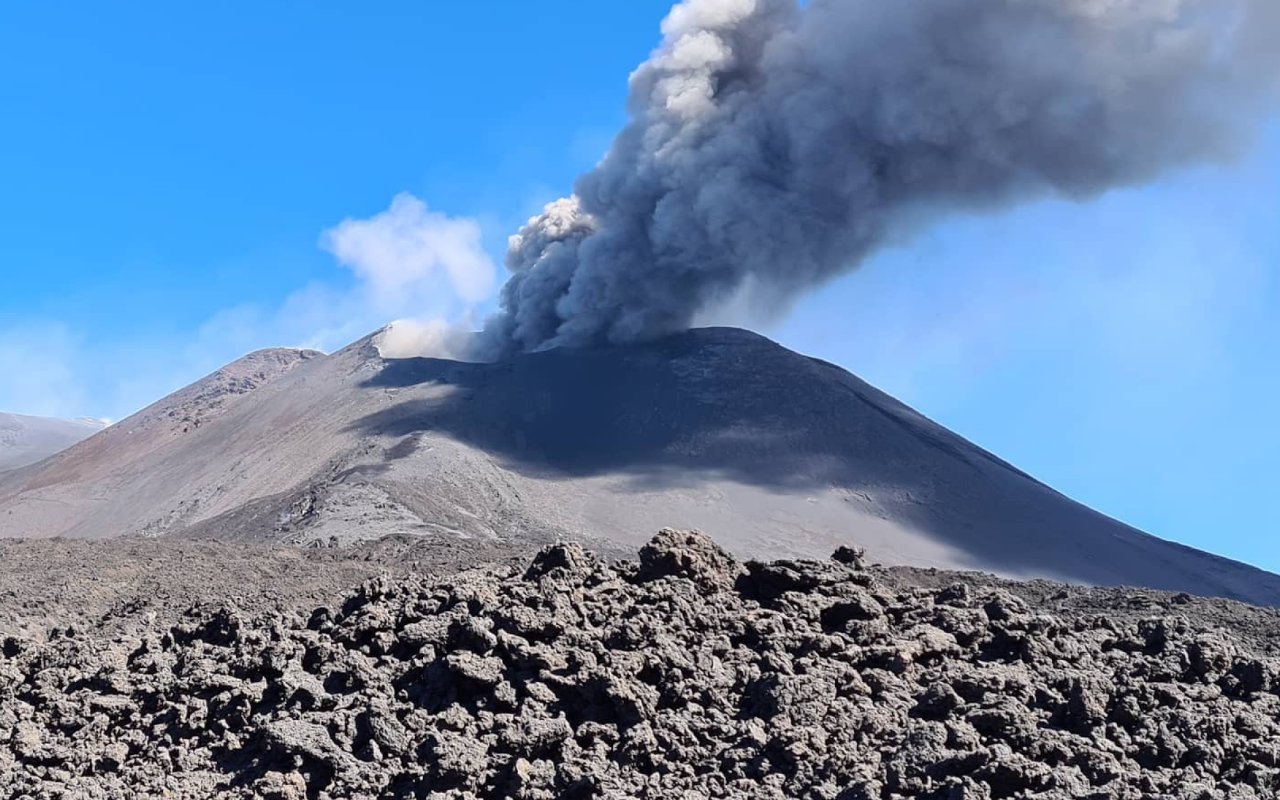« …Scìnninu, nudi, ‘mmezzu li lurdduma
di li scalazzi ‘nfunnu allavancati;
e, ccomu a li pirreri s’accustuma,
vannu priannu: Gesùzzu, piatati!…
Ma ddoppu, essennu sutta lu smaceddu,
grìdanu, vastimiannu a la canina,
ca macari “ddu Cristu” l’abbannuna…»
Thus defined the work in the solfatare Alessio di Giovanni, poet and playwright of Cianciana, one of the sulfur centers of the province of Agrigento.
Sulfur was one of the most important mineral resources of Sicily. Hard was its trade, of which testimonies have been found that date back to Antiquity, and hard work, one of the first to result in a trade union organization. The area affected by the large deposits is the central one, between the provinces of Caltanissetta, Enna and Agrigento. The mining area extended to the Province of Palermo; it included the basin of Lercara Friddi and the Province of Catania, whose port soon became an important global trading hub.
Evidence of Roman mining activities was confirmed by the discovery of a clay plaque in the district of Puzzu Rosi, in the Comitian mining area. However, it seems that this activity was already widely known in 1600 BC, at least according to the findings found at Monte Castellazzo, which testify to the commercialization of the product with the Aegean populations. It was generally an outcrop mineral and open pit quarries. The rudimentary excavation method remained active until the nineteenth century. Initially, in fact, sulfur was used for medical purposes; famous in this regard, are ‘the barrels’, which at the end of the seventeenth century were used to treat diseases such as syphilis through the extraction of cinnabar, a sulphurous mineral. It was only with the introduction of the Le Blanc method, for the manufacture on an industrial scale of the soda, that in 1787 sulfur began to be used for war purposes, as a fundamental ingredient of gunpowder. The development of extraction on an industrial basis affected the entire course of the nineteenth century and went well beyond the borders of Sicily, up to reaching mainly French and English. Between 1828 and 1830 the export of sulfur reached and exceeded 35,000 tons, but it would be necessary to wait until 1840 for a first vague stabilization of the market. In fact, sulfur was starting to suffer competition from pyrite mining, which mainly affected central Italy. Curiously, it was a disease of the plants to revive its spread. A parasitic fungus, oidium, began to affect the vines of all Europe, devastating them. The remedy? Sprays of sulfur powder in aqueous solution. The extraction and trade of sulfur thus became necessary and important again; the licatese refineries and milling plants were born up to Porto Empedocle and the city of Catania. Production continued until the end of the nineteenth century when a new collapse in sales prices occurred which brought the entire sector to its knees
By the end of the nineteenth century, more than 700 mines were active in Sicily, with a labor force of over 30,000 employees, who worked in brutal conditions from dawn to dusk; men, young people, children under the age of 14. Thus, in May 1891, the first trade union association was established to request more humane working conditions: the Fascio of Catania, which was subsequently dissolved by the Government of Francesco Crispi only three years later, bringing a change in the morphology of production and marketing of the mineral; after the crisis of the sector of the Nineties, the production was moved to Porto Empedocle, causing a strong imbalance in the economy of Catania.
Shortly before the First World War, the sector suffered a new setback, due to the spread of the Frasch method, which lowered the costs of extraction in the United States, making the mines of Sicily no longer competitive. It was only after the Second War that the sulfur sector of Sicily returned to take a little breath, until the early 1950s, when the United States was involved in the Korean War.
Between the Sixties and Seventies, the liberalization of the market wanted by the MEC, decreed the end of the island sulfur industry, with the progressive closure of all the mines, up to that of Floristella (province of Enna), in 1984, today Mining Park with Grottacalda.
As evidence of the sulfur culture, today the old rails that were used for conveying the ore remain, as well as the many museum structures commissioned by the municipalities and provinces concerned, such as the Museum and Industrial Park of Zolfara di Lercara, in the Lercara Friddi area ( Palermo) or the Mineralogical, Paleontological and Zolfara Museum Sebastiano Mottura, in Caltanissetta.
Many were also the literary works of poets and novelists, which spread and kept the memory alive, sometimes denouncing working conditions and celebrating the hard work of pirriaturi, capumastri and carusi. In this regard, the ‘Sunetti di la surfara’ by Alessio di Giovanni, and ‘The parishes of Regalpetra’
by Leonardo Sciascia. Known to the general public, it is surely the Gessolungo massacre of November 1881 told in ‘La zolfara’ by Michele Straniero, a song brought to success by Ornella Vanoni in 1959:
‘Eight are the miners
kill Gessolungo;
now the gentlemen cry
and they bring him flowers.
They did it in Heaven
a long procession;
from that throne where he is seated
Jesus Christ smiled at him. »
The social aspect of the mine was mainly tackled by Luigi Pirandello, whose family managed sulfur mines. With the novellas ‘Il fumo’ and ‘Ciàula scopre la luna’, the writer from Agrigento uses the Sicilian mining life as a tool and context to speak, with his special poetics, of the inner weaves that animate the characters, giving us at the same time one slice of life of the time.
Author | Enrica Bartalotta
https://www.siciliafan.it/cultura-zolfo-in-sicilia/?refresh_ce




